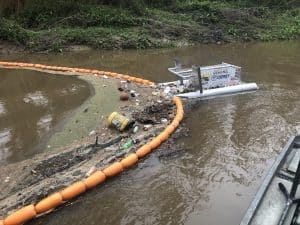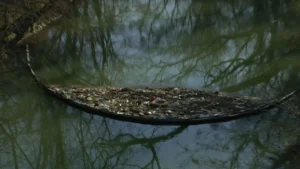The goal is to catch the garbage before it can even reach the lake.
TOLEDO, Ohio — The city of Toledo is installing seven trash capture devices in waterways within five miles of Lake Erie to catch debris before it even reaches the lake in an effort to keep the lake clean.
“By the time [the trash] gets out to Lake Erie, its already too late, too hard to clean, and already degrading, which we don’t want,” said Senior Environmental Specialist Edith Kippenhan with the city of Toledo.
As of Tuesday, the first one is being put to work near the Menards on Alexis Rd. Kippenhan says the goal of the traps is to get trash out of the water closer to the source.
The other six traps are currently on hold because of supply chain issues but will be in place by the end of the summer.
“We’re going to be deploying them at Swan Creek where it flows into the Maumee, Stickney Matzinger in the Ottawa River, we’ll have one down in Point Place, International Park and we’ll have some sea bins downtown by the city docks,” Kippenhan said.
Don Bates, creator of the trash traps, started Osprey Initiative out of Mobile, Alabama. His traps are now protecting water in nine states across the country.
“Part of the reason we started our business was to protect water and to come to a place like Toledo, meet Edith whose running this project for the city; we’re always happy to be helping people improve their water quality,” said Bates.
Bates said this is just a piece of a vision they’ve already started.
“A lot of people concentrate on these trap, but really it’s the beginning of these communities that are really starting to protect and enhance their waterways,” said Bates.
The traps are being paid for with the $415,000 U.S. Environmental Protection Agency Trash free Great Lakes Grant.



